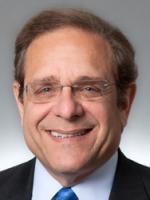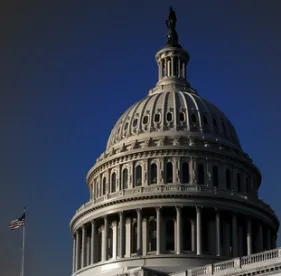On Friday, March 13, 2020, the United States House of Representatives passed H.R.6201 titled the Families First Coronavirus Response Act (the “Act”). And on Monday, March 16, 2020, the House made corrections to the Act. As we indicated in our original summary, this bill will likely be one of a number of pieces of federal legislation coming from Washington designed to deal with the unprecedented events triggered by the outbreak of COVID-19. Readers must understand that the bill passed on Friday is not yet law and still requires passage by the Senate and signature by the President. This update will highlight the corrections to the Act by the House. The Senate must still take up this bill and until the Senate passes the bill and any changes are reconciled with the current version of H.R. 6201, and the President signs it, it may be changed or modified significantly.
Summary of the changes from the Corrections made on March 16: A major correction to the Emergency Family Medical Leave Act is that it limits paid leave to leave required to care for the employee’s child due to school closures and limits the amount of paid leave provided to an employee in weeks three through twelve to $200/day or $10,000 in the aggregate.
The corrections to the Emergency Paid Sick Leave Act provide paid sick leave to employees and revised the categories for eligibility to include leave due to a quarantine or self-isolation order from state or federal government, having COVID-19 symptoms or being diagnosed with COVID-19, caretaking for a family member with the virus, caring for a child whose school is closed and child care provider is unavailable due to the virus precautions or the employee is experiencing a substantially similar situation so designated by the Secretary of Health and Human Services. The corrections state that paid sick leave available to employees shall be limited to $511/day or $5111 in the aggregate if the employee is home due to his/her own isolation/quarantine and limited to $200/day or $2000 in the aggregate if the employee is home caring for a family member with the virus or due to a child’s school closure. Employers may require “reasonable notice” from an employee after the employee has triggered paid sick leave under this section. Moreover, the corrections made on March 16 to the paid sick leave section removed the provision that prohibited employers from changing their currently existing paid sick leave policies in response to H.R. 6201.
The corrections also permit additional payroll tax credits for the employers’ expenses in maintaining qualified health plan expenses related to sick leave payments. The Secretary of Treasury is to promulgate guidance on allocation of those expenses, but unless otherwise prohibited, the expenses may allocated on a pro rata by covered employees or pro rata on the periods of coverage.
The definition of employers remains as those with fewer than 500 employees.
Contained within the Act are two sections dealing with employee leave rights. Each has its own name, the Emergency Family Medical Leave Expansion Act (“EFMLEA”) and the Emergency Paid Sick Leave Act (“EPSLA”). Both of these laws would not become effective for 15 days after enactment providing employers some limited time to plan for compliance. The current bill is only a temporary relief measure and both the expanded Family and Medical Leave and the paid sick pay provisions expire on December 31, 2020.
The EFMLEA is an amendment to the Family and Medical Leave Act of 1993 (“FMLA”). As a refresher, the current FMLA provides employees with up to twelve weeks of unpaid leave if they or an immediate family member has a “serious health condition” or for the birth or adoption of a child. The current law applies only to employers with fifty or more employees and to be eligible for FMLA leave you must have worked for the employer for at least one year.
EFMLEA expands the coverage of the FMLA in its various definitions. First, it covers only employers with less than 500 employees although the Secretary of Labor shall have the authority to issue regulations to exempt employers with less than 50 employees from the paid leave provisions of the EFMLEA when compliance would jeopardize the business as a viable concern. Second, it greatly expands who is an eligible employee because EFMLEA applies to employees after only working for their covered employer for only 30 calendar days. The corrections to the new law severely limit those reasons that would entitle an employee to leave under EFMLEA to care for a child of an employee if the child’s school or place of care has been closed, or the child-care provider is unavailable, due to a public health emergency due to coronavirus. As currently drafted, and unless revised to include an employee’s own serious health condition in a final bill, employees are still entitled to unpaid leave for serious health conditions, which would likely include COVID-19.
The first 14 days of EFMLEA leave is unpaid. However, employees may use earned any available paid time off but unlike the FMLA the employer cannot mandate the use of available paid time off if the employee elects not to use it. After 14 days, employers must provide the employee paid leave of not less 2/3 of the employee’s (Fair Labor Standards Act) regular rate times his/her usual schedule of weekly hours for the up to remaining 10 weeks of leave subject to the limits set forth in the corrections and discussed above. This provision includes employees who work under a multiemployer collective bargaining agreement and whose employers pay into a multiemployer plan receive this leave.
Similarly, the EPSLA also covers employers with fewer than 500 employees. Sick leave pay is available leave to employees who regardless of tenure:
- Quarantine or self-isolate because they might be sick
- Who seek a diagnosis or for preventive care due to coronavirus
- To care for a family member is quarantined or self-isolating because they have or may have coronavirus
- To care for a child whose school has closed or whose childcare provider is unavailable due to the coronavirus.
The rate of sick pay is the employee’s (FLSA) regular rate unless leave is for an eligible family member and then it is two-thirds the employee’s (FLSA) regular rate. Full-time employees are entitled to 2 weeks (80 hours) of sick pay and part-time employees are entitled to the typical number of hours that they work in a typical two-week period subject to the limits set forth above. Additionally, employers cannot (1) require an employee to first use already provided employer benefits before seeking EPLSA, (2) require an employee to find a replacement, or (3) fire an employee for taking benefits under EPLSA.
The Secretary of Labor is directed to create and issue posters to be posted by employers about EPSLA.
EPSLA also ensures employees who work under a multiemployer collective agreement and whose employers pay into a multiemployer plan are provided with paid leave through those plans.
Finally, to defray the costs, employers may take a tax credit applied to the employer portion of the Social Security payroll tax for both paid sick leave and family leave wages subject to certain caps as well as for certain health plan costs. The bill also prohibits an employer from taking double credit for each leave. Like virtually every other employment law, these two contain anti-retaliation provisions designed to protect employees who seek to use these befits. Employers need to pay careful attention to developments over the next few days and even weeks as much may change. Please remember this is a basic summary of a bill that has not yet been enacted. We will update you as additional developments occur.
For more information about recommended steps, please contact your Foley relationship partner. For additional web-based resources available to assist you in monitoring the spread of COVID-19 on a global basis, you may wish to visit the CDC and the World Health Organization.







 />i
/>i
